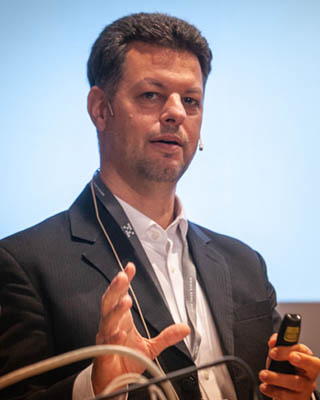Home > On-Demand Archives > Theatre Talks >
I want both: low CPU load and low E2E Latencies
Olaf Schmidt - Watch Now - EOC 2023 - Duration: 29:59

"All functions are ok now - we just need it to be faster." Everyone has heard this before and we all know how hard it is to improve the performance of a system towards the end of a project. In our experience, the system / hardware / software architecture defines the limits of performance. Some things may be improved in implementation and integration, but the big things are set during architecture phase. Making the right decisions in the architecture & design phase ensures that performance requirements are met and avoids late changes.
Real-time systems - both big and small - have to find an optimal balance between CPU load and end-to-end latency. Either you put all software on one core and avoid communication or you distribute software load to multiple cores, but introduce communication overhead. Communication overhead also means extra latency. If your system has critical latency requirements for data flows, it is wise to find a good distribution of software loads while maintaining the maximum latency requirements. It is the job of the system and software architects to design for an optimal real-time behavior and manage real-time requirements.
A model-based simulation approach supports architects in exploring design alternatives. In early project phases performance requirements can be checked and the system can be optimized. During the project the same requirements can be applied to the implementation and integration in order to ensure, that the architecture is implemented correctly.
This talk discusses the value of model-based design and optimization of the dynamic architecture.
Hi Chip Weller
the ET (both WC and BC) for each task is an input to the simulation. It is usually based on expert knowledge or prio projects.
Although this includes uncertainties it allows identification of timing issues of the overall system.
Let's schedule a meeting to discuss in more detail. Please send a e-mail to olaf.schmidt@inchron.com
Best regards,
Olaf























Olaf,
Thanks for the talk.
For your timing simulations how do you typically determine WCET for each task for the early phases.
I worry that the simulation could miss rare conditions which would cause deadlines to be missed. Could you compare this method against against analytical methods such as deadline monotonic analysis.
Thanks, Chip Weller